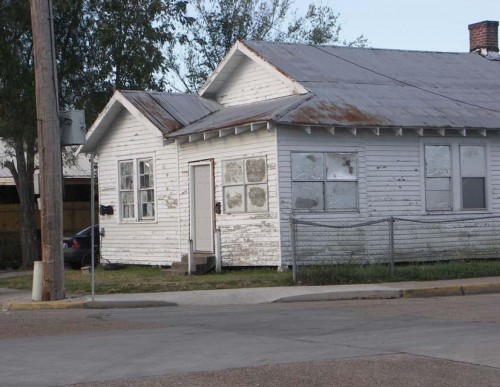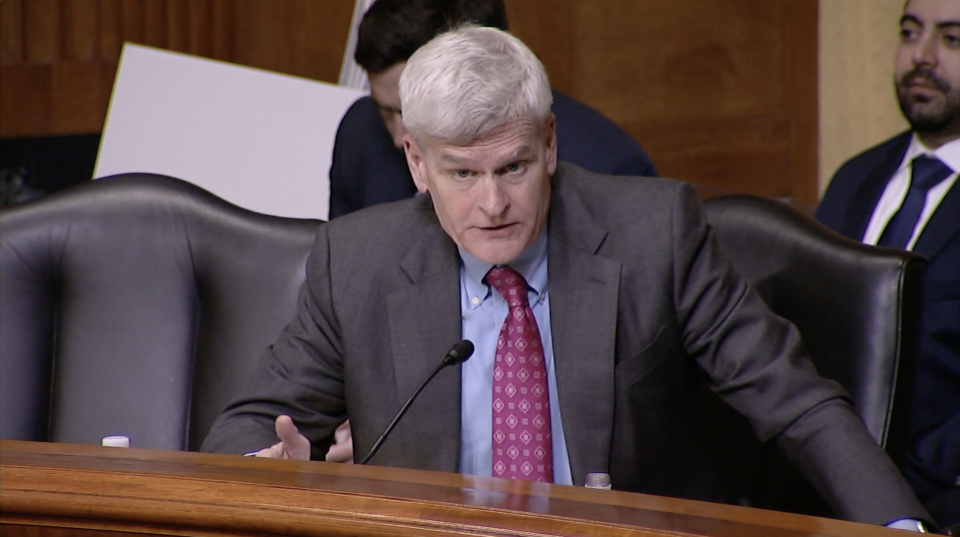Tuesday, Nov. 16
November 16, 2010
Neighbors angered over blight
November 18, 2010An environmental scientist, employed with a firm contracted by BP, was the first of two presenters who told members of the Terrebonne Parish Council last Wednesday the surface and beach oil off the coast of Louisiana had significantly decreased since the April 20 explosion of the Deepwater Horizon rig, to the point that in some areas it is undetectable by the human eye.
Chelsea Murphy, of California-based ENTRIX, addressed the council as part of a U.S. Coast Guard update of the cleanup effort. Murphy described her program, which started June 3, to test oil on shallow water levels in the Gulf of Mexico.
“We had two objectives in this program. One was to monitor for fresh oil. So we were looking for oil coming from the Gulf. We also looked for remobilized oil. That is oil that came on the surface and landed on the shoreline,” Murphy said.
Murphy showed a list of charts documenting daily activities and findings based on sentinel measurements off the coast of Louisiana in about 6 feet of water. A map indicating sentinel locations was presented as well.
“Our observation is that oil has decreased over time. The last time we saw any indication of submerged oiling was on Sept. 15. We got another hit on Sept. 20 but that was confirmed to not be BP oil,” Murphy said.
This researcher claimed that a method used to distinguish “the DNA” of oil was used to determine what crude was actually from the Horizon site and what was not.
Terrebonne was said to have had five oil hits since July. Murphy said that researchers can distinguish between new oil and existing oil in the water and went on to say that some oil levels on the sentinels are so small they cannot even be seen.
Murphy claimed that most of the oil found was already on the shoreline. “All of our hits have been areas highly impacted by surface oil,” she said.
“We’ve seen no submerged oil in the vicinity of the sentinels here in Terrebonne Parish,” Murphy said. “When we first started the program we saw that heavy peanut buttery-oil and now it is very, very light.”
Council members were quick to let Murphy know their skepticism regarding BP and claims made by a multitude of agencies during the past six months, many of which seem to have come into existence since the oil spill.
Councilman Kevin Voisin clarified with Murphy that her company was working for BP. Voisin also questioned the testing methods exercised by ENTRIX. Murphy said her job had been just to monitor the oil on the shoreline.
Councilman Clayton Voisin called the presentation impressive and said that as a lifelong area resident he is concerned about what oil might come on shore with winter weather causing rougher seas. “This period of time coming is probably the most critical,” he said. “I would recommend that you people keep vigilant on our coast for at least the next 90 to 120 days.”
Voisin also asked how long into the winter the testing was scheduled to continue.
“It is a unified thing,” Murphy said. “It will be up to the Unified Command as to when they will begin transitioning.”
Councilman Billy Hebert also called the presentation impressive and added that one of his concerns was offshore and the results of all the testing.
Murphy told Hebert that his question is better suited for the National Oceanic and Atmospheric Administration and that she had no absolute results. Prior to the meeting, Murphy had said that her concern was only the shallow water areas.
Hebert said it would be good to see the testing completed before shrimp season begins. “Good report,” he said.
Kevin Voisin asked what kind of decisions would result from the testing. “I want to know [who is] the Unified Command. It gets frustrating because everybody wants to put it off on someone else. I think the oil is going away, but I don’t think it has anything to do with all this … [with] a study and giant dots,” he said, citing the cause as being nature taking care of itself.
Councilwoman Teri Cavalier said she wanted to go on the record that in her opinion any decrease in oil levels has to do with answered prayer.
Away from the presentation Murphy was asked how this testing takes into account reports of oil plumes being trapped in lower water levels, waiting for a later time to surface. She admitted that her study is not taking that into account.
Andy Graham of the Shore Cleanup and Assessment Team offered a second presentation on the oil detection issue. He had board members pass around a map showing areas surveyed since May.
“We are getting ready to go into a maintenance and monitoring phase,” Graham said. “We document the shorelines and make cleanup recommendations. We are deciding which shorelines need no further treatment. They either never had oil or a small amount of oil but need no further treatment.”
Graham said his group’s effort is to make sure cleaning can take place without doing more damage to the environment.
“The S.C.A.T. team will be here throughout winter. We will look at weather and tides and how it is affecting shorelines,” he said.
Councilman Joey Cehan expressed concern that local boats be used by researchers and cleanup crews rather than out-of-state contractors. Graham said they used only local vessels.
Graham said that S.C.A.T. teams consist of representatives from BP, NOAA and the state of Louisiana. “This is a visual survey,” he said. “No samples are taken.”
Kevin Voisin asked that when decisions are made by any of the organizations participating in oil monitoring and cleanup if local decision makers are involved. Graham said his team has an advisor who is a professor at LSU.
While council members were respectful of the presenters they carried with them an element of experienced skepticism. The council complimented the presentations but took no action regarding the response activities.










